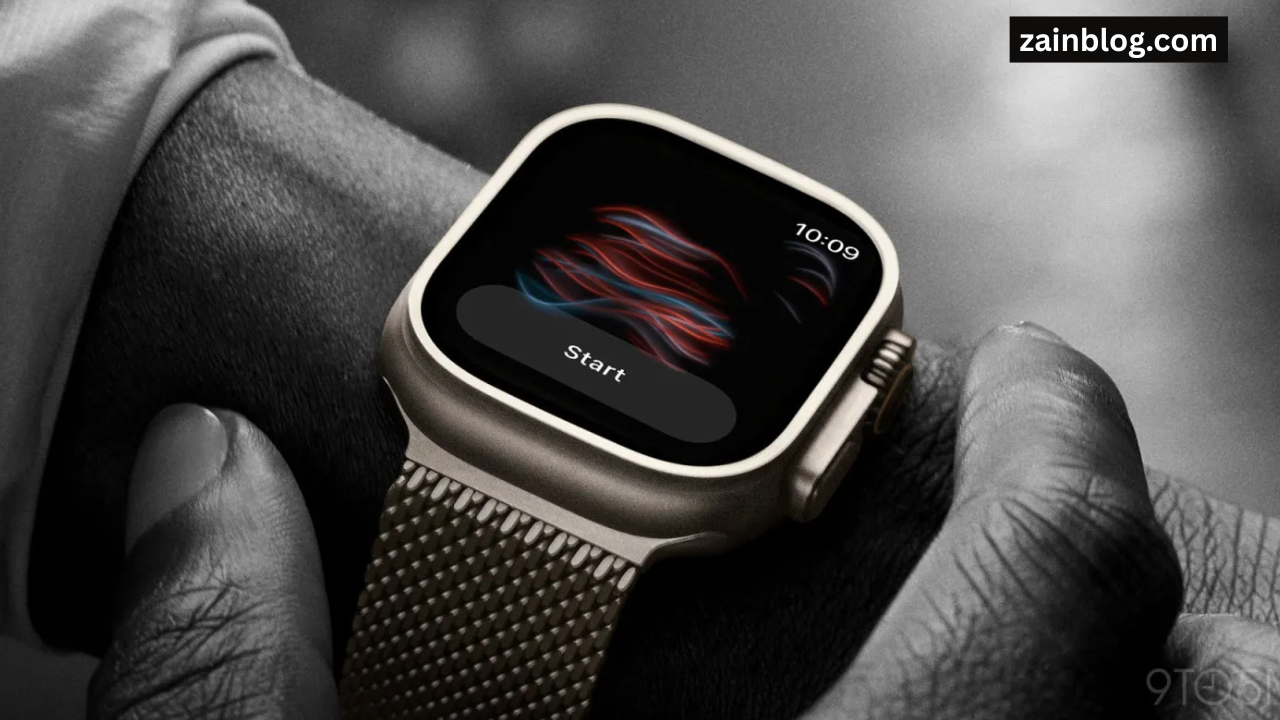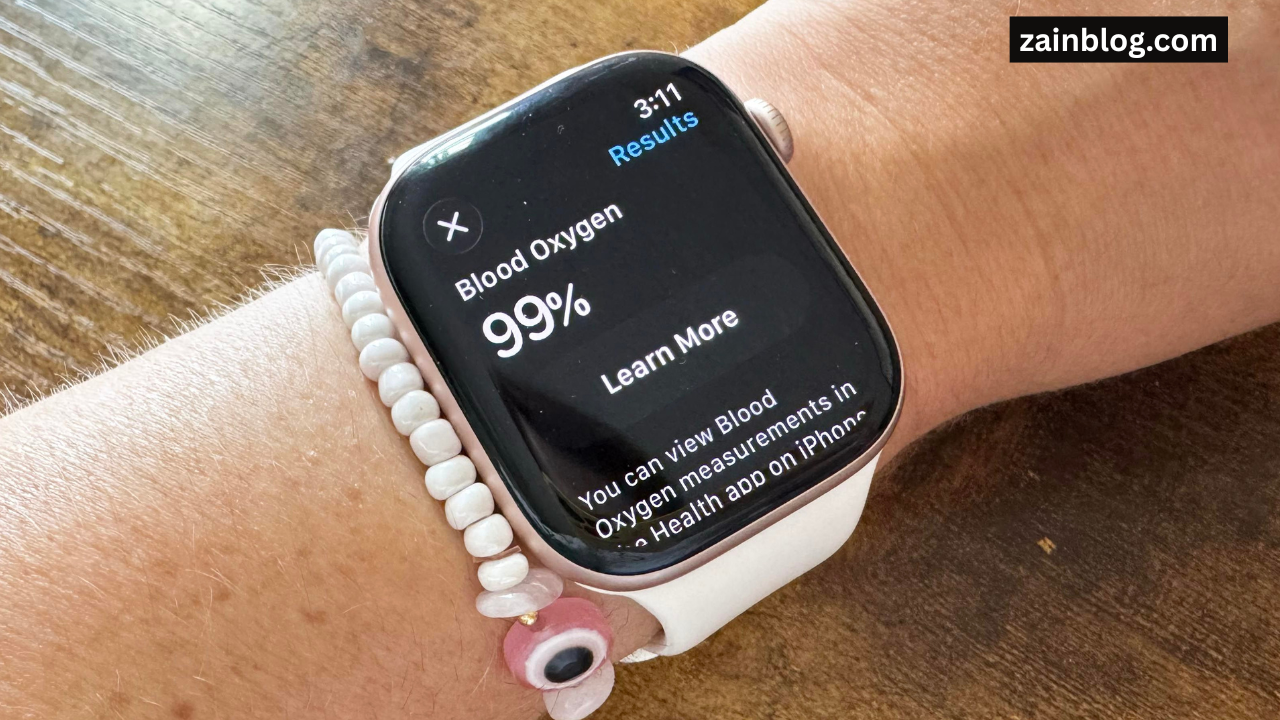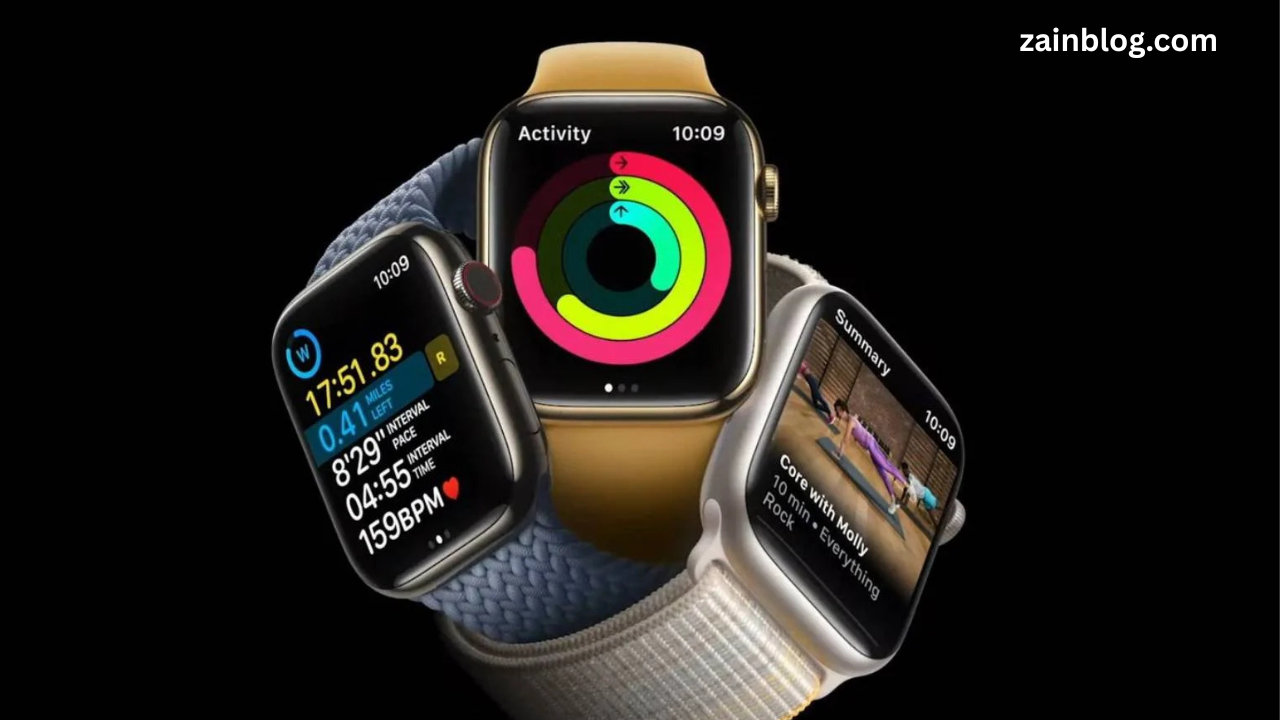Table of Contents
The Apple Watch has been at the forefront of wearable technology, delineating the market with its elegant design, nifty features, as well as its focus on fitness and health. In addition to its numerous functions such as blood oxygen monitoring, this feature was a standout as an example of its ability to assist users improve their overall health. However, the way to this feature hasn’t been easy. A legal dispute which questioned the intellectual property of the technology, Apple found itself navigating unfamiliar territory. The solution? A new design that not just fought legal issues, but also demonstrated Apple’s dedication to innovation and quality.
This blog covered by zainblogs.com looks at how the Apple Watch’s bold relaunch by examining the new Blood Oxygen Feature monitor as well as Apple’s response to the adversity and the impact on users as well as the crowded market for wearable tech.

A Glance at the Apple Watch and Its Blood Oxygen Feature
The Apple Watch is more than just a simple smartwatch. It is now an emblem of modern personal health monitoring, providing insight into heart rate and sleep, physical activity and many more. In the category of health-related tools, the monitoring of Blood Oxygen Feature was a major breakthrough.
The feature was first introduced to great acclaim it allowed users to track the levels of oxygen in their blood (SpO2). The data, which is useful to assess respiratory health in managing stress and identifying issues that could be causing sleep apnea, altitude sickness, or sleep apnea rapidly became a popular draw for consumers. The feature seamlessly integrated with Apple’s goal of providing users with vital health information directly on their wrists.
Legal Hurdles and Their Impact
After its initial release the Blood Oxygen Feature Monitoring technology came across it at the heart of a patent infringement suit. The technology firms competing with Apple claimed that Apple had infringed on the rights of intellectual property and dealt an unfair legal blow to one of Apple’s Watch’s most innovative features.
For Apple the stakes were high. A prolonged legal dispute could damage the image as a brand, a reputation built on the basis of innovation and creativity. Legal disputes are not uncommon in tech firms, this issue regarding the Blood Oxygen Feature function was a bit different. It raised questions about Apple’s capability to be a leader in the crowded wearable tech market, as well as its mission of providing novel solutions to its customers. The issue raised doubts with regard to the legitimacy of the product. What if Apple overcome this obstacle? Their solution came via an overhauled solution that confirmed their leading position in wearable technology.

Apple’s Response: A Redesign Rooted in Innovation
When confronted with problems, Apple’s strategy isn’t always the conventional. Instead of putting off or making small adjustments Apple commenced the full-on redesign of the feature to monitor blood oxygen levels. The response was a reflection of Apple’s determination and perseverance to make progress.
Enhanced Technology
The newly designed Blood Oxygen Feature sensor is equipped with modern optical technology that can measure SpO2 with greater precision through refining methods for light absorption. One of the most noticeable improvements is its ability to adapt to different skin tones, a problem that was previously a hindrance to not just the devices of Apple, but also competitors’. The new system also works better in a variety of environment conditions, and ensures stability regardless of whether the user is in the indoors or out.
Improved User Experience
Apple hasn’t stopped at advancing technology. The new Blood Oxygen Feature monitoring function now is seamlessly integrated into the user’s daily routine. Along with providing SpO2 data, it provides practical insights, for example, offering breathing exercises if oxygen levels drop below the healthy thresholds. The information is provided in real-time which makes the experience useful and easy to comprehend.
Leveraging Machine Learning
The new design also includes machine learning algorithms, which allow the user to have a completely personal medical monitoring. By analyzing patterns of the user over time it is possible for the Watch can send personalized alerts to issues such as high-altitude or respiratory issues. This degree of personalization ensures the device isn’t merely an instrument for detecting problems, but instead an active health aid.
Regulatory Compliance
Apple’s strategy to overcome legal hurdles wasn’t just limited to a new approach. The company also made regulatory compliance an important goal, putting the Blood Oxygen Feature monitoring function to rigorous tests. Today, it is proudly meeting the international standards for medical devices which has restored trust and eliminated doubts among its customers.
What the Redesigned Feature Means for Users
The redesigned Blood Oxygen Feature monitoring function is more than just a legal solution the feature is a game changer for everyone.
- Proactive Health Monitoring
This feature functions as an all-day health companion and allows wearers to recognize early symptoms of respiratory problems, stress or altitude-related issues when they travel or engage in outdoor activities.
- Holistic Health Awareness
A notable improvement is the way Blood Oxygen Feature readings can be correlated with other health indicators, including sleep and heart rate. Through the integration of several health indicators the Apple Watch provides more complete health profiles that allows users to make more informed decisions.
- Peace of Mind
With its regulatory approvals and the most precise accuracy, users can rely on this Apple Watch not just as an electronic device to wear, but also as a trusted health tool.

Navigating the Competitive Wearable Tech Landscape
The new design also puts Apple in a better position to compete with giants in the field of wearables, such as Fitbit, Garmin, and Samsung. The market is brimming with innovations, particularly when it comes to health-tech incorporation, Apple sets itself apart by tackling challenges with big and significant improvements.
There is a steep learning curve for competitors in replicating Apple’s unique combination of advanced technologies, integration of ecosystems and user-experience design. The new monitor for Blood Oxygen Feature isn’t an improvement, it’s an apex, indicating Apple’s re-emergence as a leader in the market of wearables.
Resilience and a Vision for the Future
The way that Apple has handled the feature’s technical and legal issues is an example of the ability to overcome. In focusing on improvement, user experience and conformity Apple didn’t simply fix past issues, but established a new standard. The redesigned Blood Oxygen Feature sensor bolsters its position on the Apple Watch as an indispensable instrument, providing information that could lead to life-changing changes.
For the competition this is an unsettling reminding that staying in the lead of the curve requires not only innovation, but also the ability to turn challenges into opportunities. Apple Watch Apple Watch continually redefines the possibilities of wearable health technology. This bold return to form will make it stronger than ever before as it’s not just a watch, but a whole ecosystem devoted to wellness for individuals and wearable technology. Apple’s message is simple: legal issues might occur, but for every failure, the company will be ready to be ready for a stronger return.
Frequently Asked Questions (FAQs)
1. What is the way in which The Apple Watch redefined wearable health technology?
Its Apple Watch has pioneered features that include the monitoring of heart rates, ECG readings, Blood Oxygen Feature level monitoring as well as advanced health metrics. The Apple Watch’s integration with the ecosystem as well as third-party apps improves its capabilities and makes it a vital instrument for ensuring your personal health.
2. What are the biggest challenges Apple confronted in the development of Apple Watch? Apple Watch?
Apple has been involved in legal battles concerning health-related patents, as well as competitors in the wearable tech market. This has challenged Apple’s ability to invent and stay ahead of competitors.
3. What have Apple reagierte to legal challenges in relation to Apple Watch? Apple Watch?
Apple has seized legal challenges as a chance to develop further and innovate, ensuring they ensure that Apple Watch remains at the leading edge of wearable health tech. With this, Apple has been able to have managed to set themselves apart from their competitors.
4. What is it that makes what makes the Apple Watch more than just the smartwatch?
Beyond its role as a smartwatch the Apple Watch is an entire wellness ecosystem with features for health monitoring as well as fitness tracking. It also offers seamless connectivity to various Apple devices.
5. What do Apple’s future plans look like regarding its future plans for its Apple Watch?
Apple is dedicated to overcoming the challenges that face us and to drive innovation in wearable technology. With a particular focus on wellness and health Apple aims to challenge the limits of what’s possible within the market, while ensuring that the Apple Watch will have a long-lasting legacy. Apple Watch.
Conclusion
The Apple Watch has revolutionized the possibilities of wearable technology, mixing fashion, functionality and technological innovation into one device. With its plethora of features as well as a forward-looking method of operation, Apple continues to lead in the forefront of transforming the way we incorporate technology into our life. As the advancements in connectivity and health tracking increase as well, Apple Watch is set to become a key component of the future. Apple Watch is poised to remain a vital device for all users and establishing its status as a reference in the world of wearable technology.







